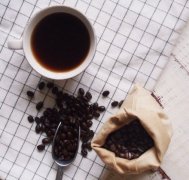"100 reasons to open the door of a cafe."

This is the title of a book, "100 reasons to push the door of a Cafe." I used to think that there was no more tricks in the books about cafes. "meeting the best family in life" has become the only theme of most cafe books. But the best moments always come from providence, and over time, such passivity is tiresome.
The author of "push", Japanese Kawaguchi leaf, senior coffee fan. Most of my life is spent with coffee and writing. The text on the back cover reads: "in 25 years, I have visited more than 800 cafes and regarded the walk in cafes across the country as a lifelong career."... " Seeing this introduction, I wonder: can just a common drink like coffee nourish a person's writing and interest all his life?
But this book is clearly a definite answer. The book says that there are 71 cafes across Japan, most of which are not on the road for foreign tourists. No. A cafe in Kyoto? No. There are plenty of places like "Naxu", "Yizi" and "Jiecheng", which you rarely see.
Ye Kawaguchi went to these places, visited the local small cafe and talked to the cafe owner. She wrote not only about the coffee shop, but also about the local scenery and nature. She wrote about the Heiji Cafe in Naxuoyan, "Boss, why do you open a coffee shop here", "because this land is where Thor and Fengshen live." She wrote about the Beidizang Cafe in Sapporo and the 04:00 beauty in Hokkaido. "if people have a narrow vision, life can easily drift with the tide." In Hokkaido, people seem to have a broad field of vision, which directly affects their character. "
The place where her eyes were fixed was not only the coffee, nor the comfortable atmosphere and light that the guests could enjoy. The author pays more attention to the soil on which the cafe stands and the mysterious owners who seem to be able to export and are content with the beauty of the countryside. This makes the book sometimes with a hint of rain and snow, and sometimes when the author goes to a cafe in a field rich in melons and fruits, we also smell the sweetness of the crops floating in the air.
Kawaguchi leaves are already middle-aged. The advantage of being middle-aged is that you are still willing to travel thousands of miles for a cafe, but when you get there, you can see a whole piece of land.
Important Notice :
前街咖啡 FrontStreet Coffee has moved to new addredd:
FrontStreet Coffee Address: 315,Donghua East Road,GuangZhou
Tel:020 38364473
- Prev

Peanut cocoa chips star Frappuccino adds flavor to your summer.
Peanut cocoa chips Star Frappuccino is hot in summer, hot as chains, binding hands and feet, and now Starbucks has found a good way for you to get rid of the fetter: as I can think of, Star Frappuccino can create your own personality Frappuccino, as long as you can do it, get rid of your hands and feet, let personality gallop freely in the heat, cold surprises are readily available. Haven't you come up with a good idea yet? It doesn't matter! Starbucks
- Next

Exclusive autumn coffee taste-autumn mixed coffee
The sound of cicadas is drifting away, the breeze is blowing gently, and a piece of sycamore falling occasionally indicates that autumn is approaching. On this occasion, Starbucks once again presents the autumn series featuring Bree Macchiato, allowing diners to experience the sweetness and elegance between lips and teeth and indulge in the romantic and pleasant urban autumn time. This season's main drink Bree Macchiato, made by Starbucks from French Bree dessert with the popular
Related
- Beginners will see the "Coffee pull flower" guide!
- What is the difference between ice blog purified milk and ordinary milk coffee?
- Why is the Philippines the largest producer of crops in Liberia?
- For coffee extraction, should the fine powder be retained?
- How does extracted espresso fill pressed powder? How much strength does it take to press the powder?
- How to make jasmine cold extract coffee? Is the jasmine + latte good?
- Will this little toy really make the coffee taste better? How does Lily Drip affect coffee extraction?
- Will the action of slapping the filter cup also affect coffee extraction?
- What's the difference between powder-to-water ratio and powder-to-liquid ratio?
- What is the Ethiopian local species? What does it have to do with Heirloom native species?

